On Nov. 14, 1994, Debbie and Lisa Ganz opened a new restaurant in Manhattan.
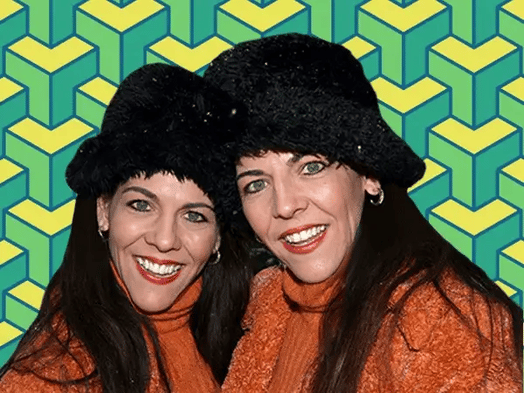
The 20-something sisters, having raised money from friends, made the ambitious decision to serve only dinner and Sunday brunch. They installed a large, mahogany bar and competed with the city’s trendiest eateries.
Many friends told them it was a bad idea. Various elders suggested they get real jobs. Debbie’s boyfriend didn’t think the concept could work.
But within weeks, hundreds of newspapers and TV shows were asking for interviews or to film inside the restaurant.
That’s because the world had never seen anything like the Ganz sisters’ restaurant.
Lisa and Debbie are identical twins, and they had staffed their eatery, Twins Restaurant, with 30+ pairs of identical twins who wore matching outfits and sported name tags that read something like “I’m not Lisa” or “I’m not Debbie.” If one twin got sick, the other had to stay home, too.
Buoyed by the restaurant’s viral reception, Lisa and Debbie planned to open locations across the country. But as they worked long restaurant hours, emptying grease traps at 2am, they discovered a more intriguing opportunity.
For any business project or media opportunity that involved twins, triplets, or “multiples,” the Ganz twins would be the consultants, the authors, or the ones to find the twins. They excelled at it. They monopolized it. And they’ve been doing it for decades now.
Lisa and Debbie Ganz have chased a world record by putting 150+ identical twins on tandem bikes. They have found identical twins to play roles in “Law & Order” and “The Marvelous Mrs. Maisel.” They have published a twin-related book.
“We basically [turned] how we were born into our business model,” Lisa tells me.
A twin story
“We’ve always embraced our twinness,” Lisa says.
Or maybe it was Debbie. As we talk on the phone, they speak exuberantly — “We have the gift of gab,” one says — sometimes at the same time, agreeing and disagreeing with an ease that comes from spending most of your life with someone since birth.
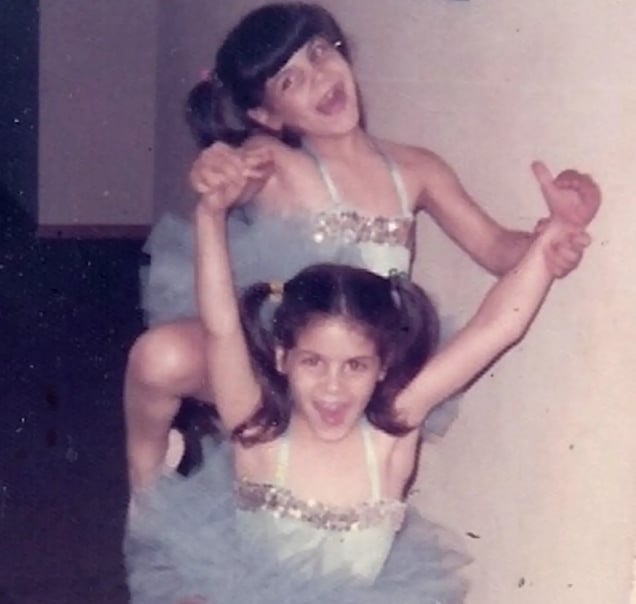
The Ganz twins as kids (courtesy of Debbie and Lisa Ganz)
For the Ganz sisters, being identical twins isn’t just a fun fact. It’s their identity.
As children, they performed in talent shows, singing duets like “Together (Wherever We Go).” Their first job was babysitting; they got fired from it together.
During their college years, while traveling in Greece, they were hired by a restaurant manager who liked the idea of identical twins staffing the hostess stand. It was their first twins-related job.
They kept traveling together, working together, always in restaurants and bars because they hoped to open their own one day.
“And then we just said, ‘Why don’t we use what we are?’” Debbie explains. They came up with the concept of staffing a restaurant exclusively with identical twins — making twins the entire theme.
They heard from plenty of doubters, but their parents were supportive, and several close friends believed in them and invested money. So did actor Tom Berenger, famous for his roles in Platoon (1986) and Major League (1989), who they’d met while working in a restaurant.
In total, the twins say they raised ~$400k (~$800k in 2022). Then, they got to work on their first business.
Inside Twins Restaurant
When the restaurant opened, the twins theme was inescapable.
Lisa and Debbie Ganz had chosen a location on Second Avenue. They had double-sided business cards, and told everyone the restaurant was in “New York, New York, the only city you name twice.” The restaurant had twin bar stools and a large, double-helix centerpiece. Waiters handed out Doublemint gum with every check.
Other twins had also opened stores or eateries. At the time, Manhattan even had a restaurant, Triplets, opened by identical brothers whose story of being separated at birth and reunited as adolescents inspired the documentary Three Identical Strangers.
But none had ever staffed a restaurant with identical siblings.
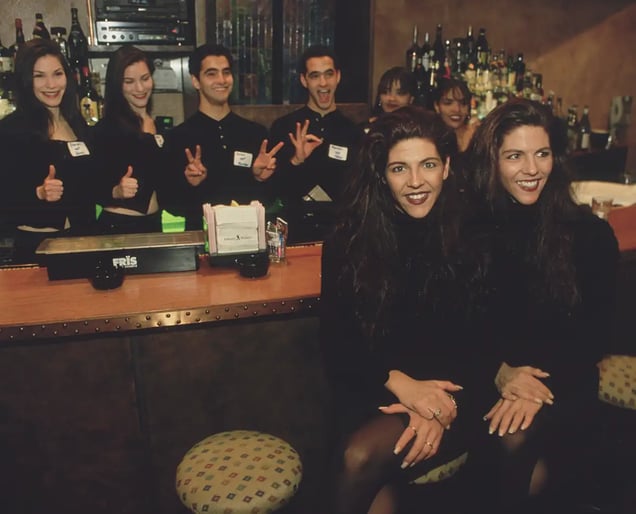
The Ganz sisters (foreground) at Twins Restaurant with fellow identical twin employees (Mark Peterson/Corbis via Getty Images)
“We took [the theme] to the nth degree,” says Lisa. The sisters even required each pair of twins to wear identical outfits.
The press couldn’t get enough of Twins Restaurant. “It was a global phenomenon,” Lisa says. “Every single day we had camera crews,” Debbie adds.
Lisa and Debbie worked the long hours of a new restaurant while also appearing on shows like “Oprah” and planning to open a string of Twins locations.
Then something unexpected happened: They started getting requests from TV producers and casting agents who wanted their help finding identical twins.
“We were in a city with a lot of people in the entertainment business,” says Debbie. “The customers could be the head of Disney, or just someone doing a local film.”
One of the first requests came from a show looking for a pair of 22-year-old twins for a makeover episode.
So they found two 22-year-old twins — an easy task since twins flocked to the restaurant or called to ask about working there — and they helped when local news producers asked them to, say, find identical twins to model dueling outfits for a fashion segment.
As time went on, producers would ask, “How much should we pay the twins?” Lisa and Debbie realized there was a business opportunity to be agents or managers for identical twins and triplets.
So when they closed Twins Restaurant in 1999 — for what was meant to be a temporary closure while they found a larger space in Times Square and expanded to California and internationally — the sisters never reopened it, and they left the restaurant business.
Their new business was anything and everything twins.
The twin economy
Their first project was a photo book, The Book of Twins, that profiled celebrity identical twins like football stars Ronde and Tiki Barber.
They didn’t need to pitch it, Lisa says. The restaurant had branded them as the twins people, so anyone who wanted to do something with twins came to them.
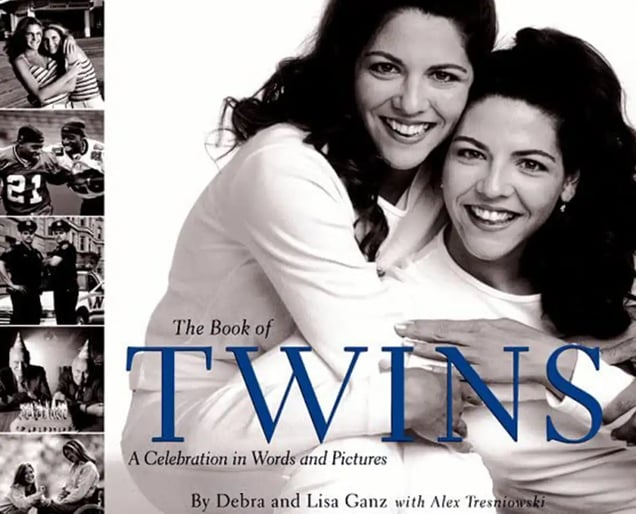
The Book of Twins, published by the Ganz sisters in 1998 (Amazon)
Over the years, they created a twins calendar, worked as twin spokespeople in advertisements, catered twin weddings, and more.
“It’s a visual concept,” says Debbie. “So anything we could do that people could see… we would do it. We were entrepreneurs before you went to school for it.”
And they made sure, after closing the restaurant, to maintain their brand position as the go-to identical twins. To this day, they give interviews on twins for radio and television, and bring 50 sets of identical twins every year to a twins festival in Twinsburg, Ohio.
But representing twins, triplets, and multiples eventually became their biggest and most enduring twins business.
To staff their restaurant, they had created a “database” of identical twins, mainly by posting ads in magazines. With Twins Restaurant appearing around the world on TV and in newspapers, local and national, they heard from more and more twins, triplets, and quads.
“Thousands of twins came to us,” Debbie says. “We would handwrite everyone’s address. We have logs in our houses, still, thousands of notebooks [where] we wrote their information.”
Along with the twins’ strong brand, this database became the basis of their business, Twins Talent Management, which finds twins, triplets, and multiples for three main cases.

When someone making an ad or casting a show or movie wants a pair of twins, they ask the Ganz sisters and specify details like age, appearance, and skill set (maybe both twins need to play the drums). In return, Twins Talent receives a cut of the twins’ fees, typically an industry standard of 10%-20%.
- They have found twins for advertisements ranging from cute identical babies in Pampers diapers, to twin models in McDonald’s commercials and Warby Parker magazine ads.
- They are currently finding identical twins for a documentary on the lives of inspirational and high-achieving twins.
- They have scouted young twins for shows such as “Law & Order,” “Orange Is the New Black,” and “The Marvelous Mrs. Maisel.”
In the last case, viewers rarely know the actors are twins, since the twins typically share a role. Due to child labor laws, producers hire young twins so that when one child actor reaches the legal limit of hours a child can work — or if one kid is having a tantrum — they can switch to his or her twin.
“All of the children’s roles, we basically have that niche,” Lisa says.

From 2015 to 2016, NASA astronaut Scott Kelly spent one year aboard the International Space Station while his identical twin, Mark Kelly, remained on Earth. Given their nearly identical genetics, researchers used the brothers as an opportunity to observe exactly how time in space changes the human body.
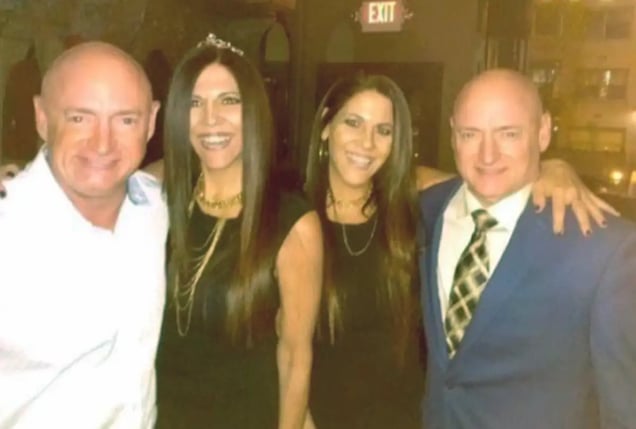
The Ganz sisters with the Kelly twins (courtesy of Lisa and Debbie Ganz)
NASA did not need Lisa and Debbie Ganz to find the Kelly brothers. But researchers around the world rely on them for larger studies.
- They have found twins for a NASA sleep study.
- Before the era of high-quality digital images, the Ganz sisters would find twins to attend conventions with plastic surgeons — after one of the twins went under the knife.
- While many researchers draw on databases that identify twins from public birth records, Twins Talent can help with more specific requests, like finding twins who have the same form of cancer for a drug trial.
Since twins are the perfect placebo group, twin studies are responsible for some of medicine’s greatest findings and most elegant experiments — especially identical twins raised apart, whose lives can tease apart the relationship between nature and nurture.

A growing category for Twins Talent, Debbie explains, involves companies that want to test or demonstrate technology using identical twins.
- They have found twins for companies using fingerprints for applications like Touch ID.
- They have found identical twins for a trade show where a company working on facial recognition wanted to showcase how their tech could differentiate between twins.
Despite being called “identical twins,” no twins have exactly the same fingerprint — their small physical differences make them the perfect stress test of biometric software.
***
The Ganz sisters are always growing their twins, triplets, and quads database. But they haven’t needed ads since the restaurant opened.
Instead, multiples find them on their Instagram page, @TwinsTalent, often after seeing them in the news, or even by calling what was once the phone number for Twins Restaurant. (People still try to make reservations, too.)
When asked if Twins Talent has any competitors nipping at its heels, Debbie replies, “No, zero.” As far as I can tell, her answer is not bombast, just the truth. Their twins business is one of a kind.
Out of Their Niche
Nowadays, working with twins and multiples comprises just a fraction of the Ganz sisters’ business.
“We love twins. We are twins. That’s our community,” says Debbie. “But… it’s a niche under our larger umbrella.”
Entertainment folks knew the sisters were experts at finding people, so they turned to them for all kinds of specific, non-twin casting requests. The sisters became general casting directors, then started developing original programming.
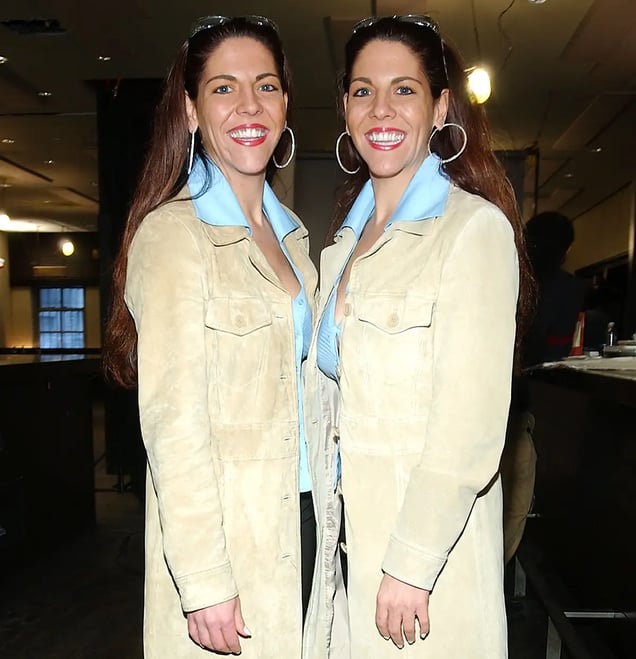
The Ganz sisters at an interview for the NBC reality show “The Restaurant” in 2003 in New York City (Lawrence Lucier/Getty Images)
Today, they have a division of labor: Debbie runs Twins Talent Management, representing twins and multiples, while Lisa — through her own Twins Talent Productions and as an executive at Lusid Media — does original programming like…
- Casting participants on “Hell’s Kitchen,” HGTV’s “House in a Hurry,” and other reality shows
- Developing a true-crime, multipart documentary called Perfect World that is streaming on Peacock
- Casting hundreds of female cancer survivors for a show on SurvivorNetTV
- Selling show concepts to networks and streamers, such as “Fat Chef” to The Food Network
The twins’ move from a niche of representing twins to mainstream casting and development may seem unusual. But it’s a phenomenon that plays out across industries:
- Whole Foods began as a small, natural-foods store for vegetarians with a devoted base of crunchy-granola customers. Today, it is an upscale grocery-store chain owned by Amazon.
- Beats by Dre built a multibillion-dollar headphone company in part by prioritizing heavy bass for people listening to rap and hip-hop. But as they grew into the company acquired by Apple, they also made noise-canceling headphones for frequent fliers and office workers.
- Taika Waititi’s early recognition from directing and acting in quirky comedies — such as What We Do in the Shadows and Hunt for the Wilderpeople — led to his gigs writing and directing Marvel and Star Wars movies.
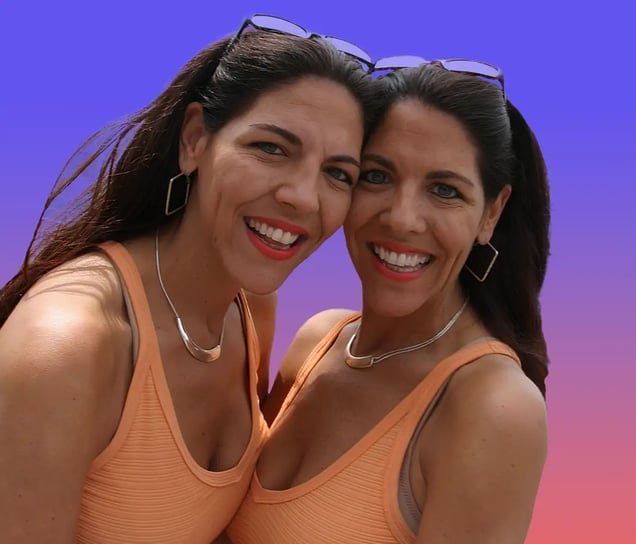
The Ganz sisters (Kathleen Voege/Getty Images; photo illustration by The Hustle)
But the Ganz sisters will never leave behind the world of twins.
They inevitably come up with twins-related projects to work on together. They constantly connect and help out other twins. And they’re eternally grateful for the opportunities Twins Restaurant opened up for them.
“I think most people spend their whole life trying to do something good or special,” says Debbie. “Lisa and I feel very blessed that when we were in our twenties, we created something no one in the world had ever created — that it exploded into so many interesting platforms.”
